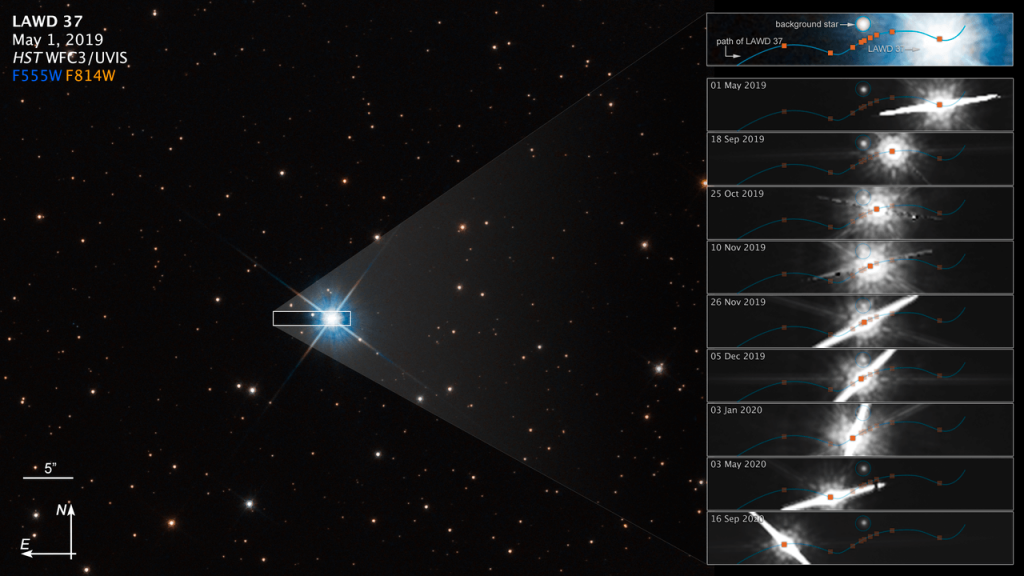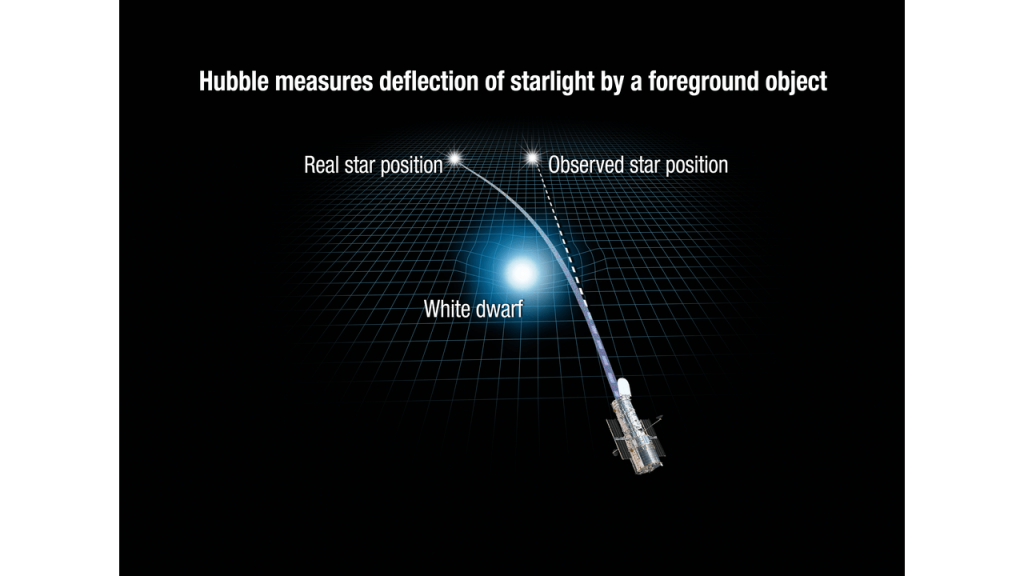Astronomers have finally weighed an isolated white dwarf, or "wrinkled" shell of a dead star.
The findings confirm astronomers' predictions about how massive white dwarfs can be.They will also help explain the strange superdense matter that makes up these stellar remnants.
 This figure shows how microlensing was used to measure the mass of a white dwarf. Photo: hubblesite.org
This figure shows how microlensing was used to measure the mass of a white dwarf. Photo: hubblesite.org
In the new study, astronomers usedHubble Space Telescope to measure the mass of an individual white dwarf, LAWD 37. Although astronomers have weighed white dwarfs in binary star systems, LAWD 37 became the first white dwarf measured in isolation.
 Hubble measures the deflection of starlight by an object in the foreground (artist's illustration). Photo: hubblesite.org
Hubble measures the deflection of starlight by an object in the foreground (artist's illustration). Photo: hubblesite.org
To do this, the research group led bywith UC Santa Cruz astronomer Peter McGill exploited the distortion of space-time by gravity. As LAWD 37 passed in front of a distant bright star, its light was refracted around the white dwarf in a process of gravitational microlensing. This effect was predicted by Albert Einstein. When LAWD 37 distorted the star's light, the star appeared to move slightly in the sky and Hubble recorded the event with incredible precision.
 Drawing showing the path of the white dwarf LAWD 37across the sky as it passed in front of a distant star and distorted its light. Image Credit: NASA, ESA, Peter McGill (UC Santa Cruz, IoA), Kailash Sahu (STScI); Image Processing: Joseph De Pasquale (STScI)
Drawing showing the path of the white dwarf LAWD 37across the sky as it passed in front of a distant star and distorted its light. Image Credit: NASA, ESA, Peter McGill (UC Santa Cruz, IoA), Kailash Sahu (STScI); Image Processing: Joseph De Pasquale (STScI)
LAWD 37 is only 15 light years awayfrom Earth, so it has been studied for many years. In a new study, astronomers used data from the European Space Agency's Gaia mission to predict when a white dwarf will pass in front of a distant star. Based on the slight movement of the distant star in the sky, scientists estimate that LAWD 37 is about 56% more massive than the Sun. This is consistent with existing models and forecasts.
Read more:
Scientists transplanted human “brain” into rats and told what happened in the end
Two photos of the Earth with a difference of 50 years were compared at NASA: what scientists found
Found a rare planet, very similar to the Earth. She is close to us